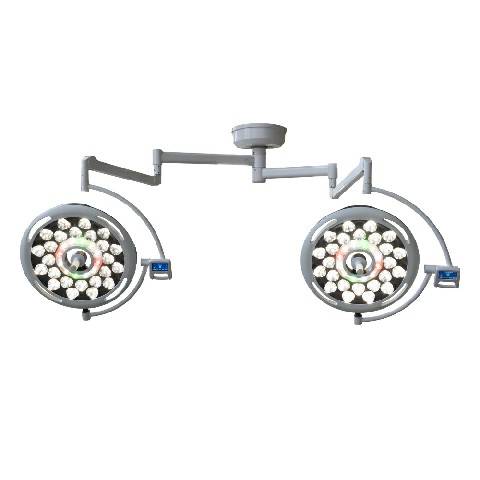Adresse
304, rue Cardinal Nord
Centre Dorchester, MA 02124
Heures de travail
Du lundi au vendredi : 7h - 19h
Week-end : 10h - 17h
Bienvenue sur mon blog !
Avant de plonger dans le contenu, j'aimerais que vous me rejoigniez sur mes plateformes de médias sociaux où je partage plus d'informations, interagis avec la communauté et publie des mises à jour. Voici comment vous pouvez me contacter :
Facebook :https://www.facebook.com/profile.php?id=100071234835011
LinkedIn :https://www.linkedin.com/company/74943205/admin/dashboard/
YouTube :www.youtube.com/@shandongexpertmedicalequip4695
TikTok :www.tiktok.com/@expertmedical
Commençons maintenant notre voyage ensemble. J'espère que vous trouverez le contenu ici instructif, engageant et utile.

In the intricate world of modern surgery, precision, visibility, and efficiency are paramount. Among the many essential tools and technologies that contribute to successful surgical outcomes, surgical lighting fixtures play a pivotal role. These fixtures are not merely sources of illumination; they are sophisticated instruments designed to provide optimal lighting conditions for surgeons and their teams, enabling them to perform complex procedures with accuracy and confidence. This comprehensive guide delves into the various aspects of choosing the right surgical lighting fixtures, exploring the different types, key features, selection criteria, and maintenance considerations. Understanding these elements is crucial for hospitals, clinics, and surgical centers to ensure the highest standards of patient care and surgical excellence. Effective surgical lighting fixtures are foundational for modern surgical practice.
The landscape of surgical lighting fixtures has evolved significantly over the years, with advancements in technology leading to the development of diverse types of lighting solutions. Each type offers unique characteristics and advantages, catering to specific surgical needs and preferences. Here are some of the most common types of surgical lighting fixtures:


When selecting surgical lighting fixtures, several key features and specifications must be considered to ensure optimal performance and suitability for the intended surgical procedures. These include:









The correct placement of surgical lighting fixtures is just as important as the quality of the fixtures themselves. Proper positioning ensures optimal illumination of the surgical field while minimizing glare and shadows. Factors to consider include:
| Caractéristique | Lampes halogènes | Lumières LED |
|---|---|---|
| Efficacité énergétique | Inférieur | Plus haut |
| Production de chaleur | Plus haut | Inférieur |
| Durée de vie | Plus court | Plus long |
| Rendu des couleurs | Bien | Excellent |
| Température de couleur | Warmer (Yellowish) | Cooler (Whiter) |
| Réduction des ombres | Modéré | Excellent with advanced optical designs |
| Coût initial | Inférieur | Plus haut |
| Long-Term Cost | Higher (due to frequent bulb replacements) | Lower (due to longer lifespan and energy savings) |

Proper maintenance and care are essential for ensuring the longevity and optimal performance of surgical lighting fixtures. Regular cleaning, inspection, and timely replacement of components are crucial. Key maintenance tasks include:
Surgical lighting fixtures are indispensable tools in modern surgery, playing a crucial role in ensuring precision, visibility, and positive patient outcomes. Choosing the right surgical lighting fixtures requires careful consideration of various factors, including the type of surgery, the size of the operating room, budget constraints, and specific surgical team preferences. By understanding the different types of surgical lighting fixtures, key features, placement considerations, and maintenance requirements, hospitals and surgical centers can make informed decisions and invest in lighting solutions that meet their specific needs. Investing in high-quality surgical lighting fixtures is an investment in patient safety, surgical excellence, and overall healthcare quality. The selection of surgical lighting fixtures is a critical decision.
Q: What is the ideal illuminance (lux) for surgical lighting?
A: The ideal illuminance varies depending on the type of surgery. Generally, a range of 40,000 to 160,000 lux is recommended for most surgical procedures.
Q: What is the difference between halogen and LED éclairages chirurgicaux?
A: Halogen lights are less energy-efficient, generate more heat, and have a shorter lifespan compared to LED lights. LED lights offer better color rendering, lower heat generation, and a much longer lifespan. LED surgical lighting fixtures are generally the preferred choice.
Q: What is the importance of shadow reduction in surgical lighting?
A: Shadow reduction minimizes shadows cast by the surgical team’s hands and instruments, ensuring uninterrupted visibility of the surgical field.
Q: Are mobile éclairages chirurgicaux suitable for all types of surgery?
A: Mobile surgical lighting fixtures are suitable for a variety of procedures, particularly in situations where flexibility and portability are required. However, for complex surgeries requiring high illuminance and precise positioning, ceiling-mounted lights are generally preferred.
Q: How does color temperature affect surgical visibility?
A: Color temperature affects the perception of colors. Neutral white light (around 4000-4500 Kelvin) provides the most accurate color rendering, which is crucial for distinguishing between different tissues and organs.
